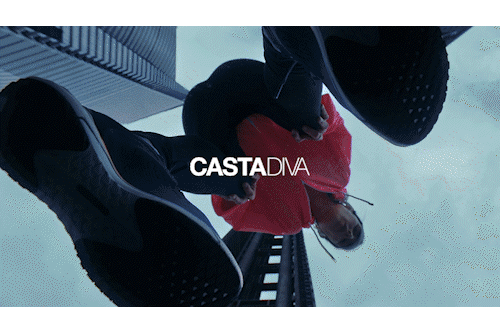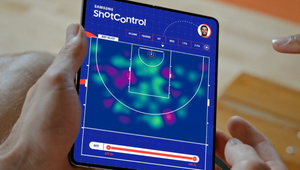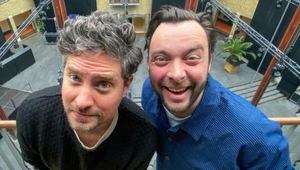
Uprising: Kahraman Çinar and Daan Haak on Developing Their Craft

The creative team of Kahraman Çinar and Daan Haak have a shared passion for film, music, poetry and psychology which they bring to their own work and also admire externally. The duo both attended the Willem de Kooning Academy where they studied advertising, but their experiences were quite different as children, as well as their inspiration coming from far and wide.
Art director Kahraman and copywriter Daan were quite the opposites as children. Kahraman spent his time playing sports ‘especially football’ and much like many, dreamt of becoming a professional footballer. Comparatively, Daan developed an affinity with comic books and magazines, looking forward to each new story he came across. At a slightly later age he became interested in the drawings in newspapers, about reality. “The kind of drawing that tells a whole story in an incredibly powerful way,” he says. While Kahraman was honing his skills on the pitch, “outside with friends, skating and playing football”, Daan reminisces, “I knew pretty quickly that I wanted to tell stories.”
Significant to Kahraman’s upbringing was his experience of being raised by parents from two different cultures, his father being Turkish and his mother being from the Netherlands. He reflects: “My father always told me this: You’re blessed that you can learn from two cultures because you take all the good qualities from both cultures, and create your own. I think from my father’s culture I learned to be really self-reliant, and my mom’s culture made me grounded. Because I know two cultures, I naturally am a very open-minded person.”
Daan’s upbringing was influenced by the open-mindedness of his parents. “When my parents gave me a subscription to a weekly magazine when I was 12, I wanted the Eppo, a magazine with comics for adults. Every week you would get a new story. The magazine, full of adult jokes and sex, was not quite meant for someone of my age, but I loved it.” His intrigue for these comic-style magazines led to him taking the time to research around the craft. “In high school I wrote a research paper about 'the power of a print', in which I investigated the influence of cartoons in the First World War.” Daan also explains how he stuck to the forms he knew as a child, later experimenting as his knowledge expanded.
After deciding to pursue a career in advertising, both Kahraman and Dann studied at Willem de Kooning Academy, where they embarked on a four-year course and respective internships. Daan says, “at the academy I learned the craft in a super free form. Especially by doing it a lot. And I loved that.” While Kahraman agrees, “I had a great time at WdKA, because the teachers were very inspiring and you come in touch with people who have the same interests and think the same way. WdKA gives you the opportunity and time to develop your crafts.”
During their studies, Kahraman embarked on an internship at Virtue while Dann did a five month internship at Roorda Reclamebureau. It was during this period that they had their first experience working on campaigns and gained valuable insight into the industry. Kahraman explains how his first campaign was for Foot Locker. “They wanted their campaign to resonate with festivals. A nice project, but because Foot Locker couldn’t really make their mind up on what they wanted exactly, it was a long and tiring process. It taught me a lot about communicating with big companies, it showed me how the process of a campaign from start till end works.” Daan, on the other hand, explains his learning process through his internship and the creation of a campaign explaining the N-term (a mathematical number in the Netherlands which calculates the level of difficulty in an exam, relative to exams that have previously taken place). He explains the intricacies of the project, “It was an incredibly complicated project especially because the client wanted to tell the whole story and we preferred to make the story simple and fun.”
With Cheil Amsterdam being the first full time role for both creatives, they share their takeaways so far. Kahraman explains the difficulty of being an art director but having to cater specifically to a client, “It often happens that we have a super great idea, that everyone is really excited about, but then the client is afraid to get out of their comfort zone and afraid to take the risk. In this situation, we have to tone it down and strip the idea, and we end with only a shell of what once was our great idea. That really frustrates me sometimes.” He also mentions his frustrations, which stem from attempts atdiversity within campaigns and how it has to come from core company values, rather than what may be a forced brief. “Less appropriation and more adding to culture. I know that this is one of the goals of most advertising agencies, but in my perspective, they easily get convinced to do otherwise by the client. There’s both sides to it though: you always work for a brand, so you are never autonomous. I understand it is not always possible, but maybe the industry has to stand its ground more.”
As the advertising industry continues to grow at an unprecedented rate, Daan explains his experience with creating unique and innovative work, rather than pitching work for the sake of it. “There is so much bad work being made. Of course, demand has changed a lot in recent years and content agencies are springing up like mushrooms. Things can be done faster and cheaper and, above all, they have to look good. A pitch is written for every fart and for big clients you have to be constantly proactive in coming up with ideas to keep them happy. Preferably four or five or six. And then to be told 'no' because the idea is a bit too daring. I think as an industry we should say no to pitches more often if the conditions are ridiculous. That sometimes we should just present one idea that you really believe in as an agency.”
Aside from their shared advertising endeavours, the pair have their own unique interests outside of work. Kahraman prioritises, “Football. Food. Friends. Film. Music. Making furniture.” Apparently, he’s quite the craftsman! While Daan can be found on Instagram, sharing his collection of jokes, daily thoughts and new work. As he jokes about our new lives while we adjust to the pandemic, he makes sure he creates when inspiration strikes: “The fun of creating your own ideas is the best thing there is and is something I always want to do.”
It all comes down to the duo following their passion. Kahraman says the most motivating aspect of his work is, “to see my ideas come to life and become reality.“ Daan on the other hand says it’s “to be able to do what is so beautiful about this profession: to come up with unique and innovative things.”












